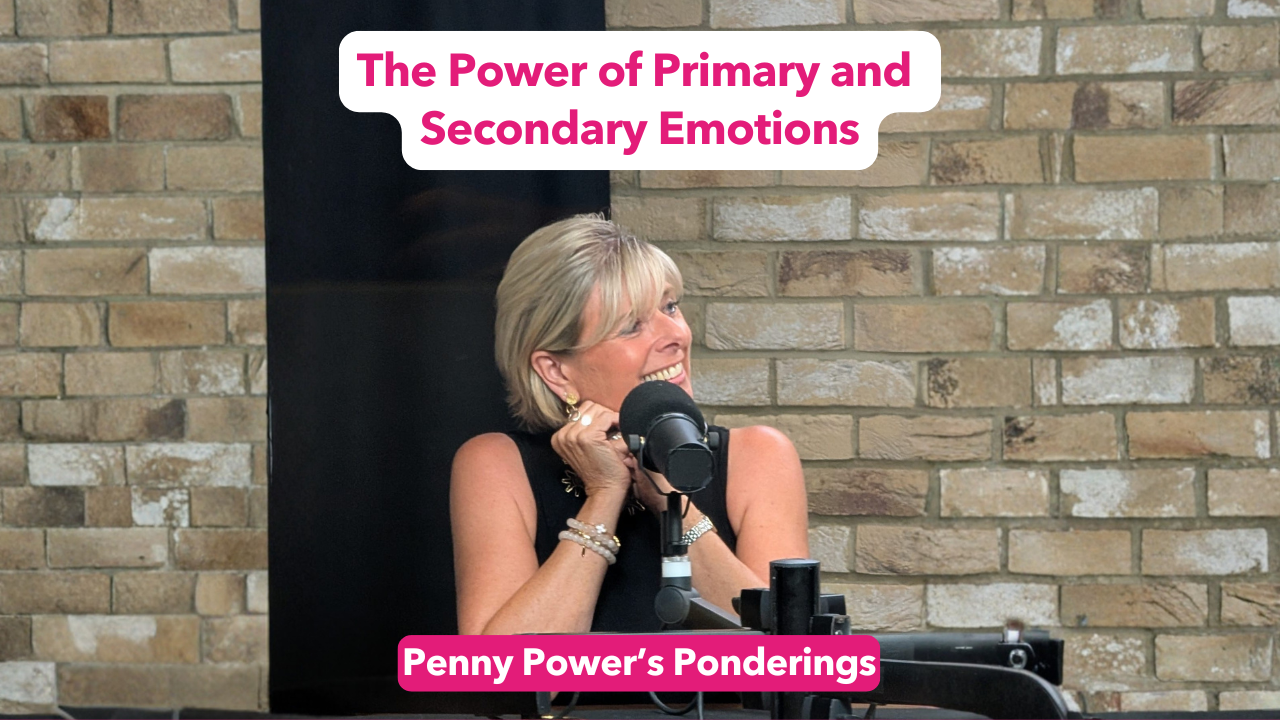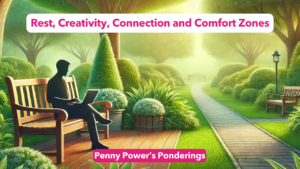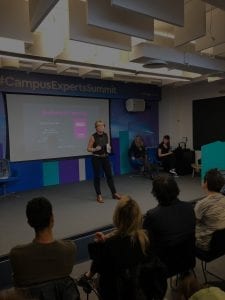By Penny Power – Business Author & Human-Centred Speaker
As you might know, or perhaps not, this is my 109th Pondering. Each one focuses on how ‘Business Is Personal’ and on our personal development, so that we can be super-dooper in business, and happy!
Personal development and self-understanding are key to professional success, in leadership, business ownership, and meaningful relationships. Strong relationships depend on sharing your truth and recognising others’ courage to share theirs.
I thought I would share something I learned in 2018. It was during a difficult period in my life, I found a therapist and she introduced me to an idea that changed the way I understand myself: the difference between primary and secondary emotions.
I have always loved this concept, as I think it is so important to be able to understand our emotions, then we will know how to work with them and hopefully heal them.
Ambiguity in our emotional world can be unsettling. I can’t rest if I feel something I don’t understand; my natural pull is always toward clarity and problem-solving. Yet how can we solve our problems without understanding what lies beneath them?
At the time, I was struggling to make sense of my feelings. I could name what I was feeling, fear, but I didn’t understand why those emotions had such power over me. Then I learned that what I was experiencing were secondary emotions, reactions layered beneath were something deeper, simpler, and far more human. My fear (primary Emotion) manifested as anxiety, worry, insecurity, panic, and loss of control.
Dr. Paul Ekman and Robert Plutchik describe Primary emotions, the raw, instinctive responses we all share: love, joy, fear, anger, sadness, disgust, and surprise. They’re immediate and universal, part of what makes us human. How joyful, and let’s keep our humanness and become super-human.
Secondary emotions, however, are shaped by our experiences, beliefs, and stories. They’re the feelings that arise once our mind begins to interpret what’s happening. They can be beautiful, but also confusing. They’re often where our overthinking, past wounds, and unmet needs mix with the purity of the primary feeling.
For example: each primary emotion can have the following Secondary one:
Primary emotion – LOVE- the secondary ones are affection, romance, desire, attachment and even obsession
Primary emotion – FEAR- Anxiety, jealousy, control, insecurity
Primary Emotion- ANGER – resentment, frustration, indignation, bitterness
Primary Emotion – Sadness – guilt, loneliness, disappointment, shame
Primary Emotion Joy – excitement, gratitude, pride, contentment
We have to be courageous to look internally and really consider the secondary emotion and we must be truthful with ourselves.
When I learned this, something softened inside me. Instead of judging myself for feeling too emotional, I started asking, what’s beneath this? Beneath resentment, I often found sadness. Beneath anxiety, I found fear. Beneath desire, I found love. I re-found my love of my chosen path, community building.
That simple awareness gave me more compassion, for myself and for others. It also gave me direction and a path to follow. I also realised how often we respond to each other’s primary emotions without ever seeing what’s truly underneath.
Understanding our emotional layers helps us move closer to truth. It gives us language for what’s real and helps us respond from the heart rather than react from the wound.
So today, if you find yourself overwhelmed or confused by your feelings, ponder this gentle question:
“What’s the secondary emotion beneath this?”
or
“What is the Primary Emotion that is blocking me?”
You might find that behind the complexity of emotion lies something very simple, a longing to be safe, to be loved, or to be seen.
That’s where healing begins. That’s where significance lives. When we truly see ourselves, we give others permission to see us too — and that’s the most powerful path to finding our significance in life, in our work, and in the people we support.”




